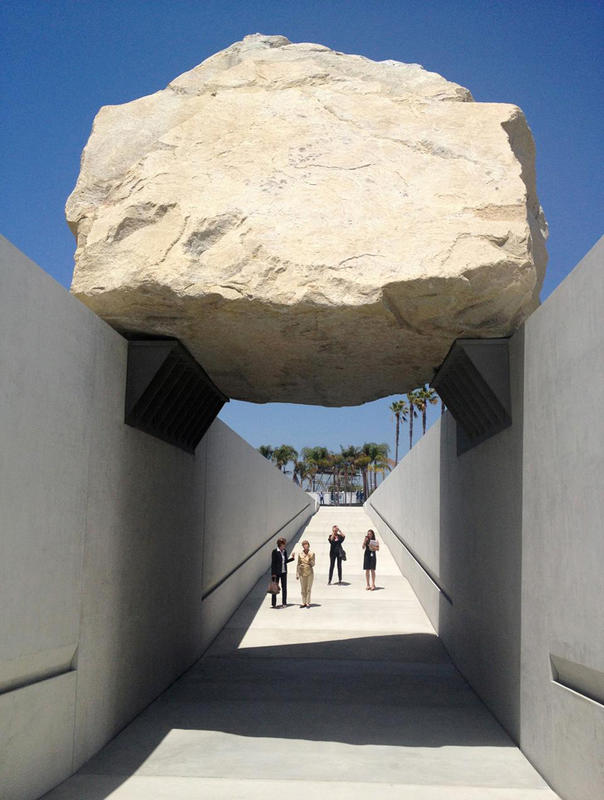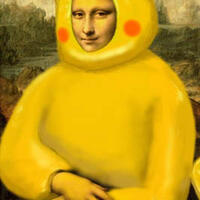More about Levitated Mass
- All
- Info
- Shop

Contributor
Michael Heizer doesn't think Levitated Mass will be affected by earthquake prone California.
A 340-ton granite rock sits atop a 456-foot long trench that is 15 feet deep. From certain angles it appears to float. How in the world did it get there?
It took 36 years to find the perfect boulder and another 7 years to figure out how to move it. The 105-mile trip from the quarry to the museum took almost two weeks. The custom-built trailer transporting the rock crept along at 5 miles an hour through the Los Angeles streets traveling only at night. Thousands of people made the pilgrimage to see the rock on its journey, partying the whole way.
The wedges supporting the mammoth rock are there in case of an earthquake. Heizer must be a daredevil because he didn't want to include them. Luckily he was outvoted. Having experienced many earthquakes large and small during my twenty years in Los Angeles, I would certainly not want to be standing underneath the rock when the next big one hits – wedges or no wedges.
Featured Content
Here is what Wikipedia says about Levitated Mass
Levitated Mass is a 2012 large-scale public art by Michael Heizer at Resnick North Lawn at the Los Angeles County Museum of Art (LACMA). The installation consists of a 340-ton boulder placed above a 456 feet (139 m) viewing pathway to accommodate 360-degree viewing. The nature, expense and scale of the installation attracted discussion within the public art world, and its notable 106 miles (171 km) transit from the Jurupa Valley Quarry in Riverside County was widely covered by the media.
The piece is open to the public during museum hours and does not require museum admission.
Check out the full Wikipedia article about Levitated Mass















